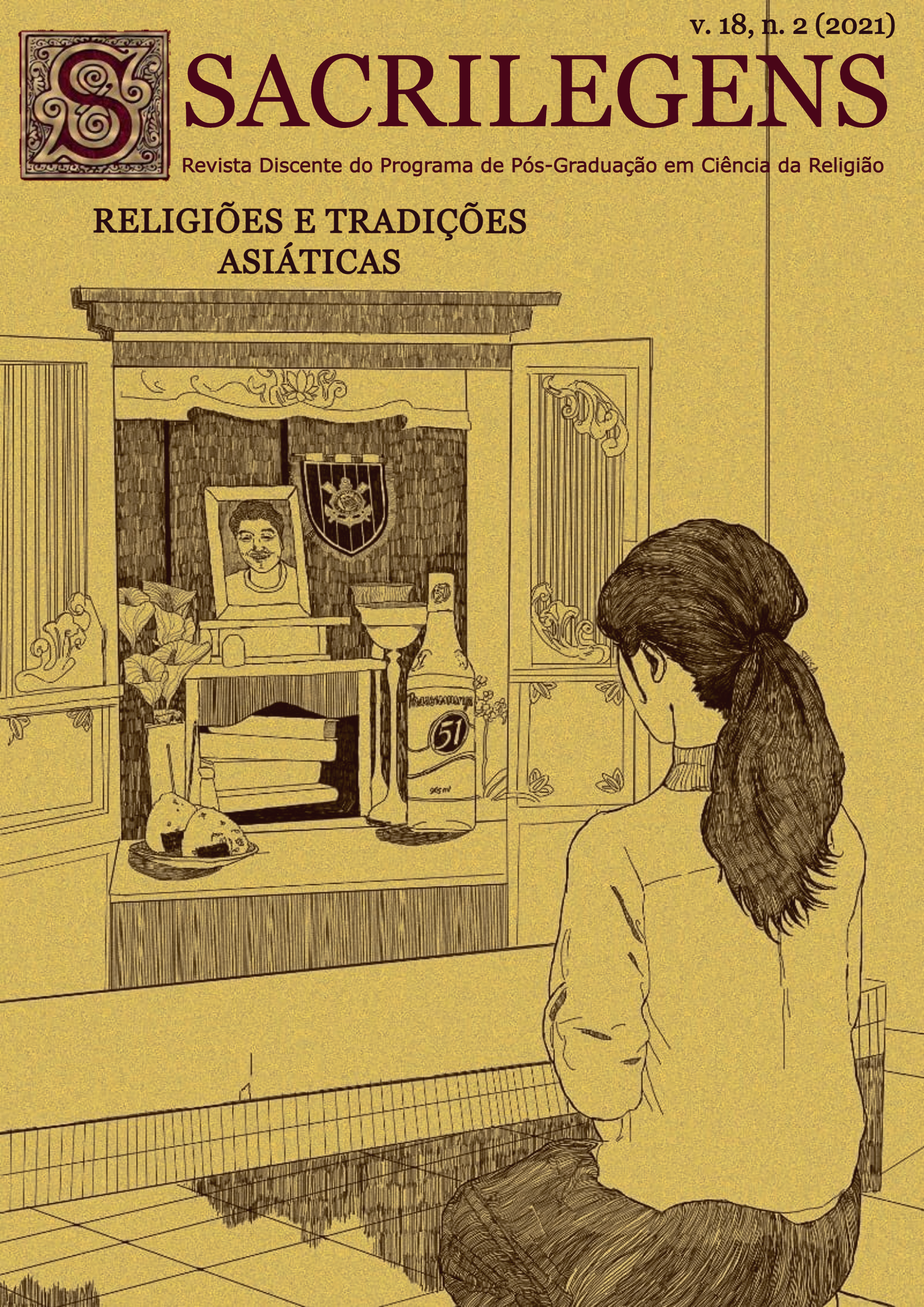“Um sem um Segundo”: uma sustentação ao monismo estrito de Parmênides pela advaita vedanta
DOI:
https://doi.org/10.34019/2237-6151.2021.v18.34861Palavras-chave:
Da Natureza, Parmênides, Shankaracharya, monismo, advaitaResumo
A Unidade do Ser apresentada ao mundo ocidental por Parmênides em Da Natureza exerceu um profundo impacto no pensamento filosófico subsequente, notadamente no platonismo e neo-platonismo. Ao longo dos séculos, o monismo de Parmênides tem sido reinterpretado não em sentido estrito, mas como uma unidade na multiplicidade, contornando assim um paradoxo com o mundo sensível. Com base na uniformidade de pensamento contido em Da Natureza, pretendo reforçar o caráter estrito do monismo contido no poema, utilizando a filosofia advaita (literalmente “não dois”) vedantina para sustentar e aprofundar a visão parmedínica original, livre das aparentes contradições entre uno e múltiplo.
Downloads
Referências
ANTISERI D., REALE G. Filosofia: Antiguidade e Idade Média (Volume 1). Paulus Editora; 1ª edição, 2017.
ARISTÓTELES. Metafísica. Aristóteles. Tradução de Vincenzo Cocco. São Paulo: Abril Cultural, 1973.
CARVALHO, BS. Similaridades entre a tradição upanichádica e a filosofia grega antiga. Sacrilegens. v. 9 n. 2 (2012).
CHATTERJEE S., DATTA D. An Introduction to Indian Philosophy Rupa Publications Private Limited; 20th edition, 2012.
CHATURVEDI S. Atma Bodha By Shankaracharya: Knowledge of the Self. Independently Published, 2019.
CORDERO NL. Parmenides, Venerable and Awesome. Plato, Theaetetus 183e: Proceedings of the International Symposium, 2012.
DUGAN KP., TRABBIC JG. Understanding Parmenides as a Numerical Monist: A Comparative Study. Proquest, Umi Dissertation Publishing, 2011.
DUMAN M. Reflections on Parmenides’ Monism, 2012.
GAMBHIRANANDA S. Bhagavad Gita: With the commentary of Shankaracharya. Advaita Ashrama, 1984.
JONES RH. Early Advaita Vedanta Philosophy, Volume 1: Plain English Translations of the Gaudapada-karikas With a Summary of Shankara’s Commentary. Jackson Square Books; 1ª edição, 2014.
MADHAVANANDA S. Brihadaranyaka Upanishad: with the Commentary of Shankaracharya. Advaita Ashrama. 1950.
MAHARISHI, R. Who am I? Sri Ramana Ashram. 2008
MENON YK. The Mind of Adi Shankaracharya. Jaico Publishing House. Jaico Publishing House; 8ª edição, 2015.
OLDMEADOW H. Sankara's Doctrine of Maya. Asian Philosophy (Nottingham) 2:2, 1992.
PRABHAVANANDA S. The Upanishads: Breath of the Eternal. Vedanta Press & Bookshop; Second edição,1975.
RAMAMOORTHY H. Ribhu Gita: English Translation from the Original Sanskrit Epic Sivarahasyam. Society of Abidance in Truth, 2017.
SANTOS, JT. Da natureza. Edições Loyola; 2ª edição, 2002.
SHANKARACHARYA. Viveka-Chudamani - A Jóia Suprema da Sabedoria. Editora Teosófica; 2º edição, 2019.
SILVEIRA DS., BRÍGIDO E. O Uno E A Díade De Platão Segundo Giovanni Reale. Ano 10 - n. 20 - jan-jun de 2016
SOARS, D. ‘I Am that I Am’ (Ex. 3.14): from Augustine to Abhishiktānanda—Holy Ground Between Neoplatonism and Advaita Vedānta. SOPHIA (2020). https://doi.org/10.1007/s11841-020-00774-9
VIMUKTANANDA. Aparokshanubhuti: Or Self-Realization of Sri Sankaracharya: Of Sri Shankaracharya. Vedanta Pr., 1997.
Downloads
Publicado
Como Citar
Edição
Seção
Licença
Copyright (c) 2022 Rafael Varella

Este trabalho está licenciado sob uma licença Creative Commons Attribution 4.0 International License.
 A Revista Sacrilegens é um periódico de acesso aberto, licenciada sob a licença Creative Commons Attribution 4.0 International
A Revista Sacrilegens é um periódico de acesso aberto, licenciada sob a licença Creative Commons Attribution 4.0 International










